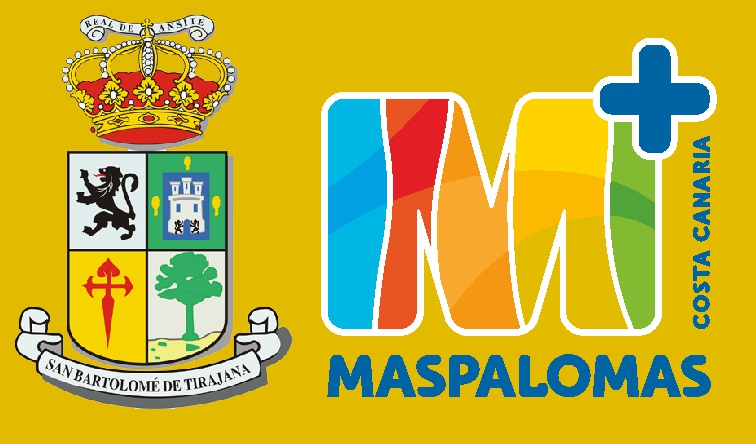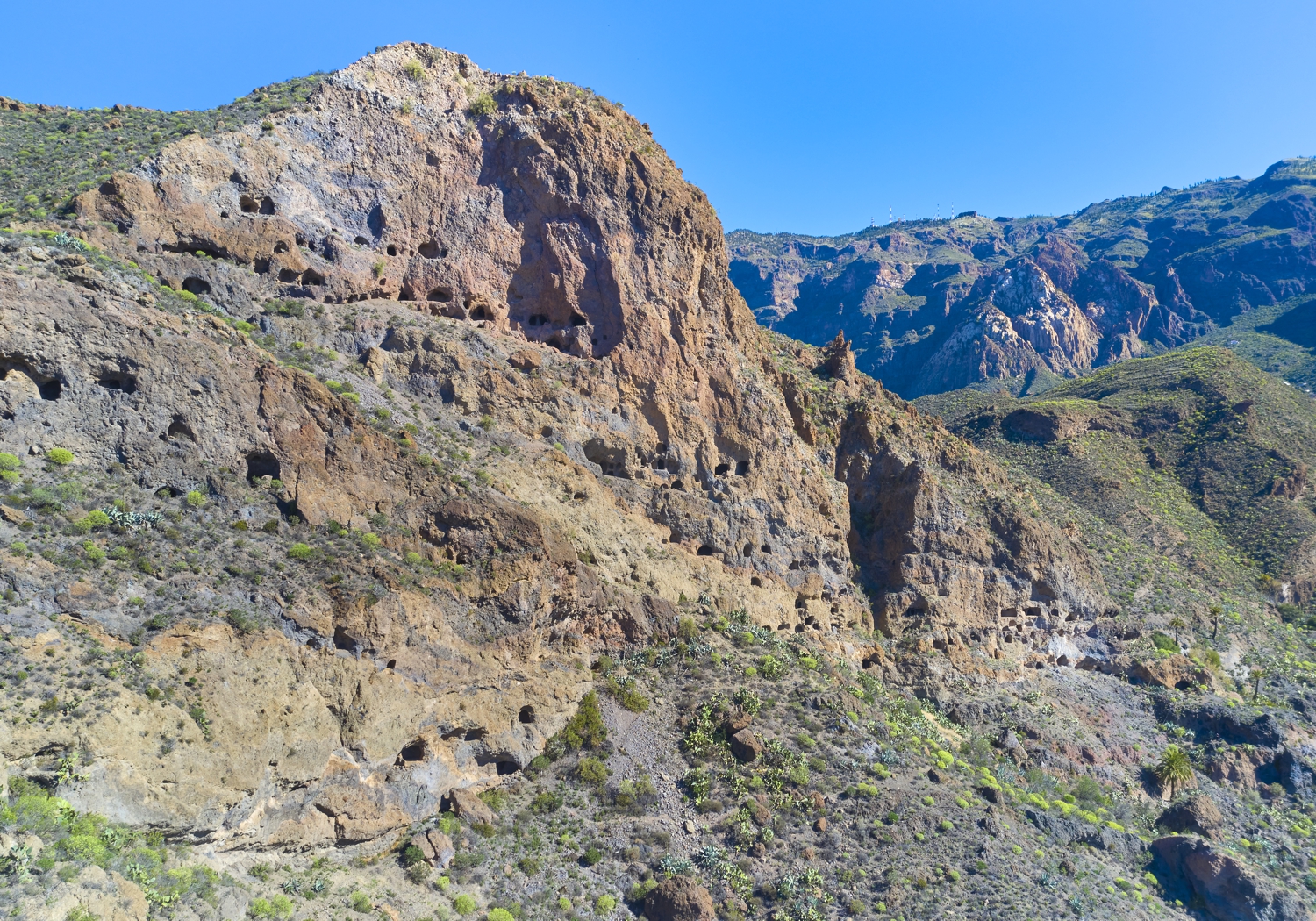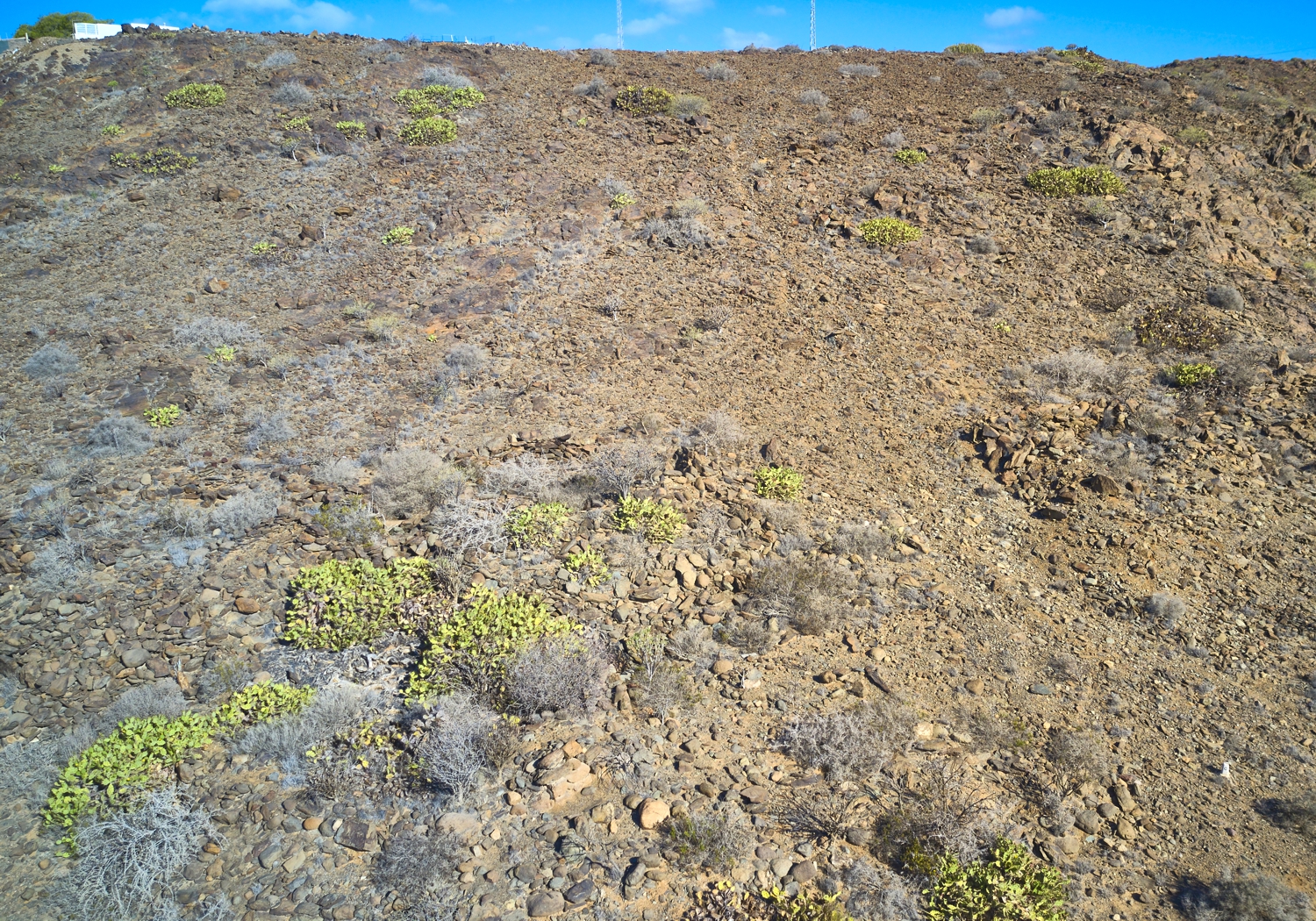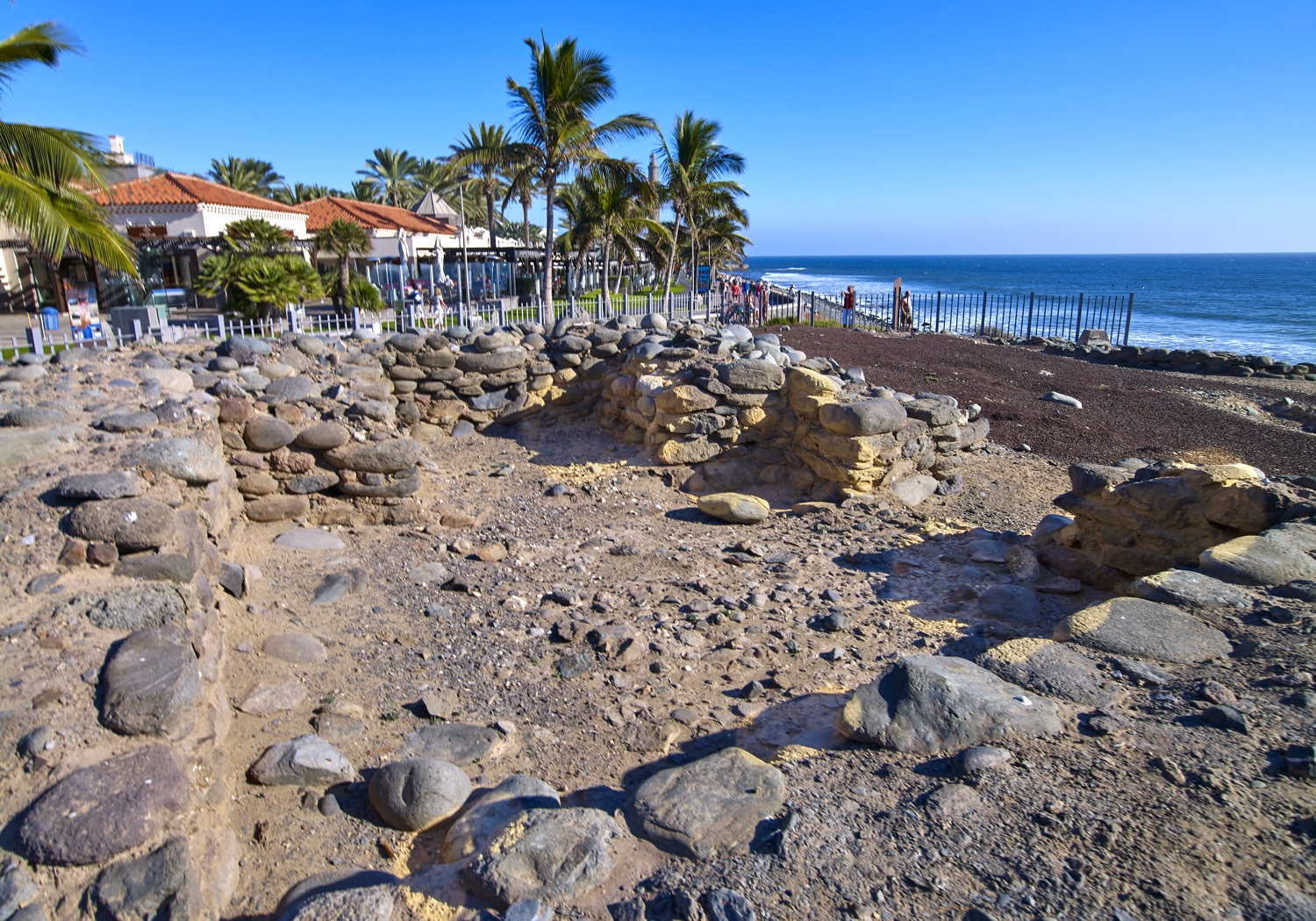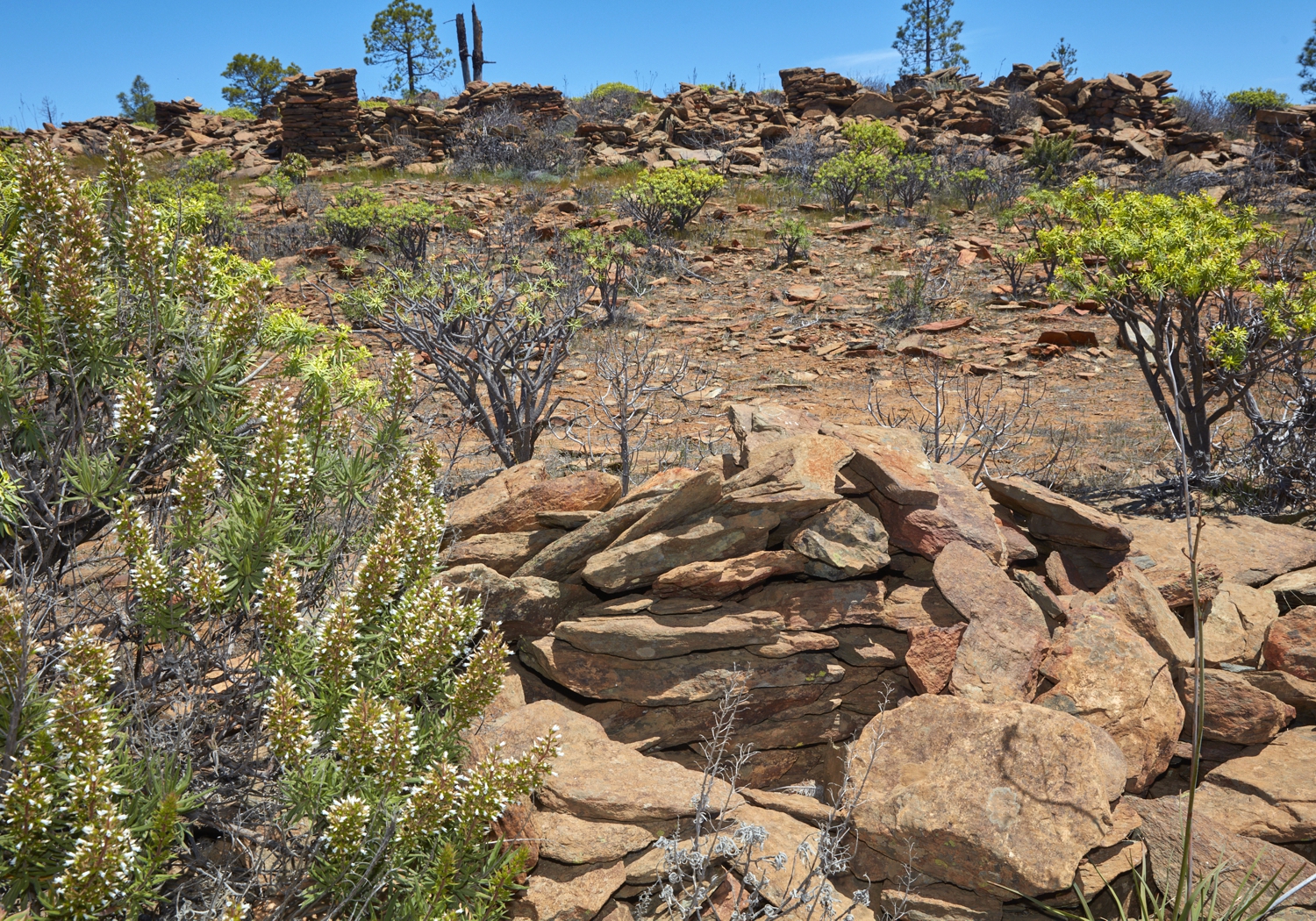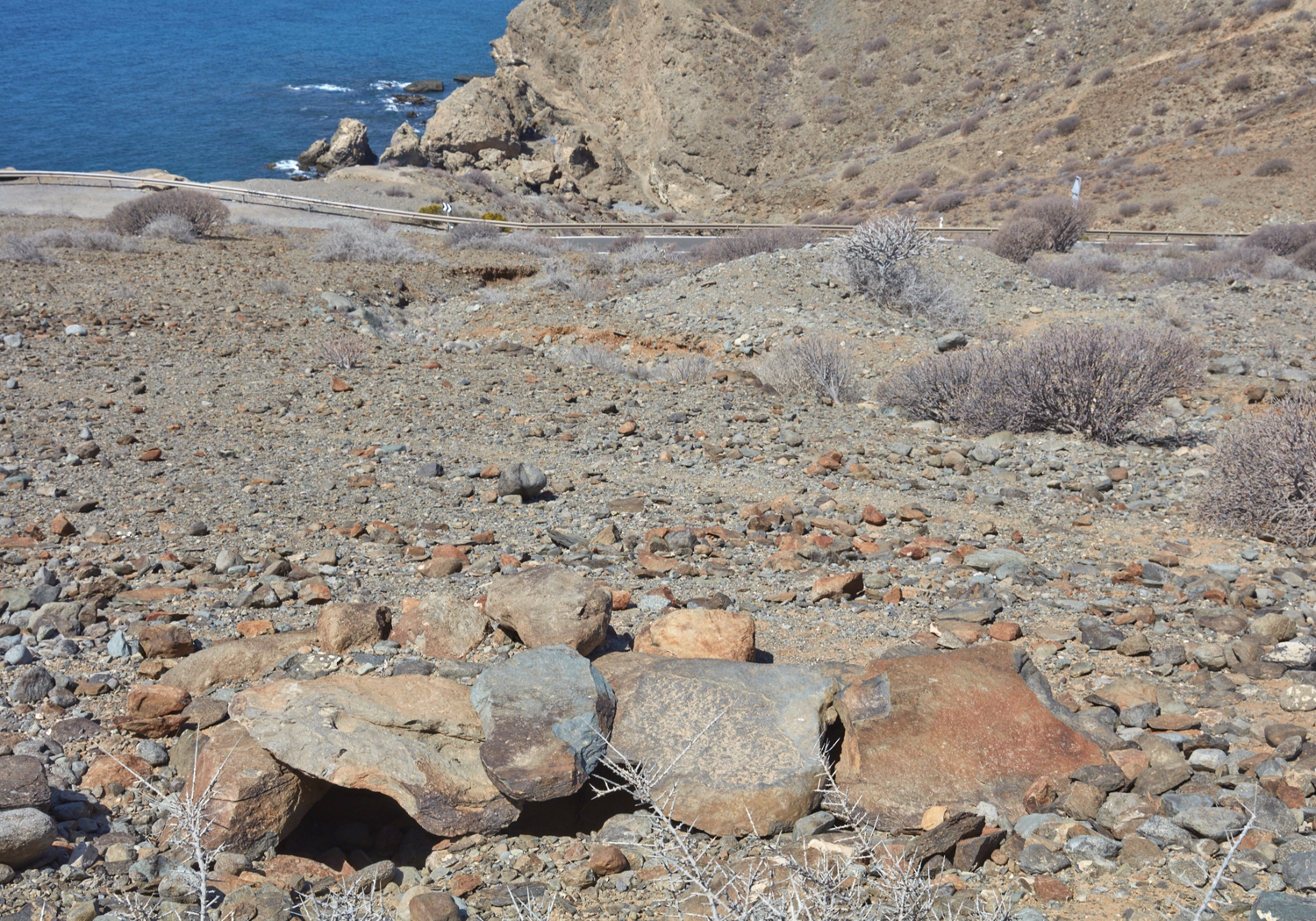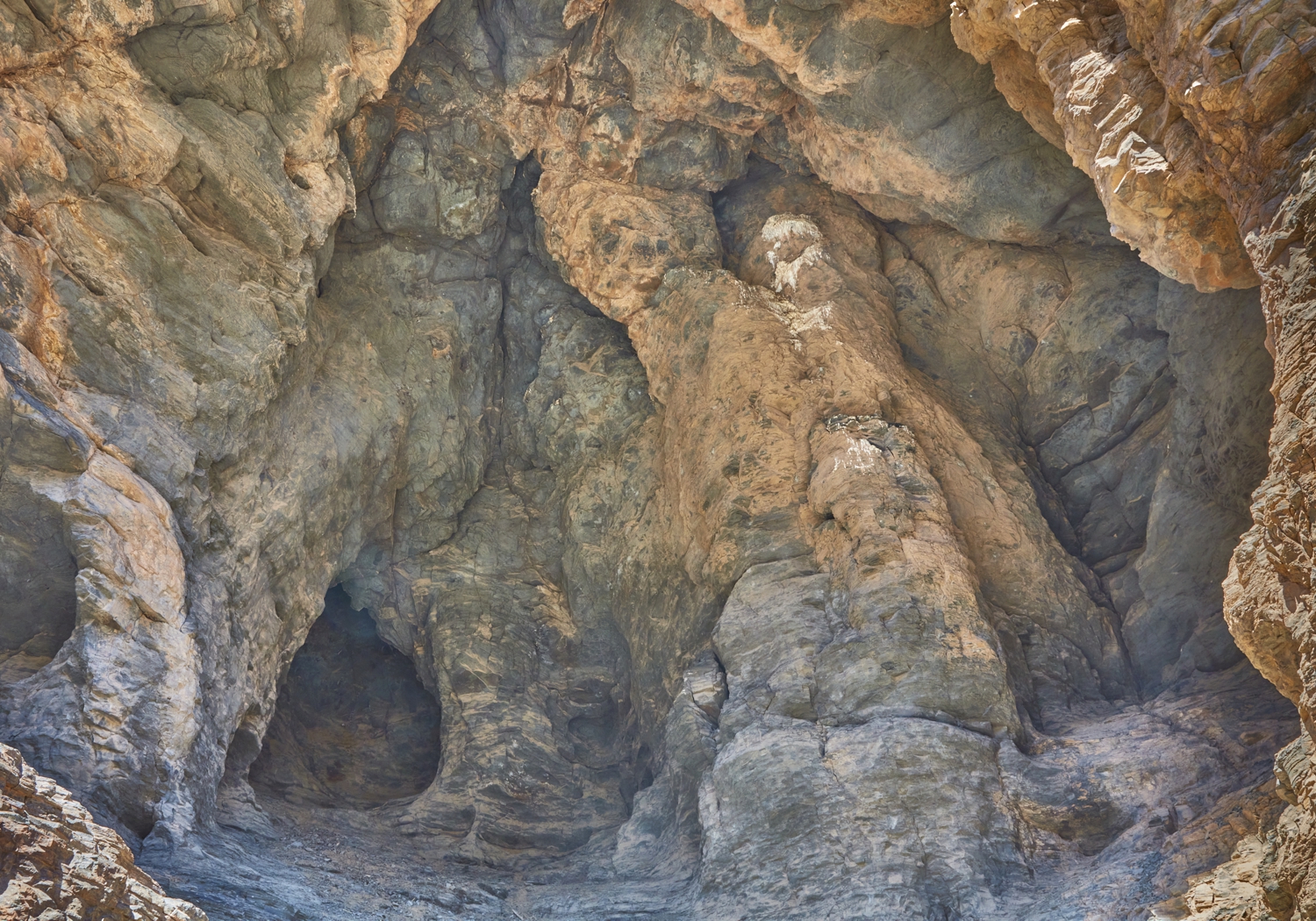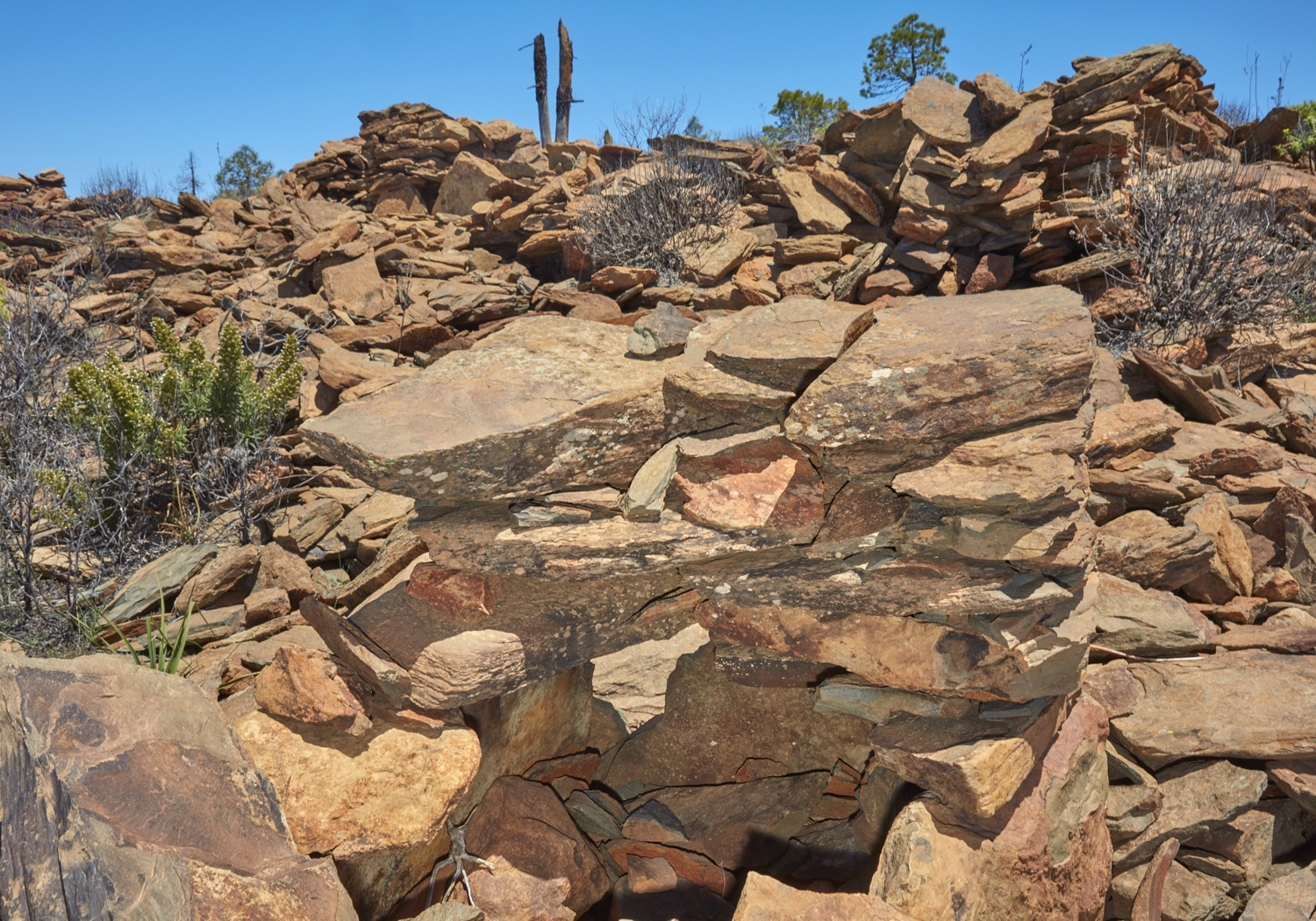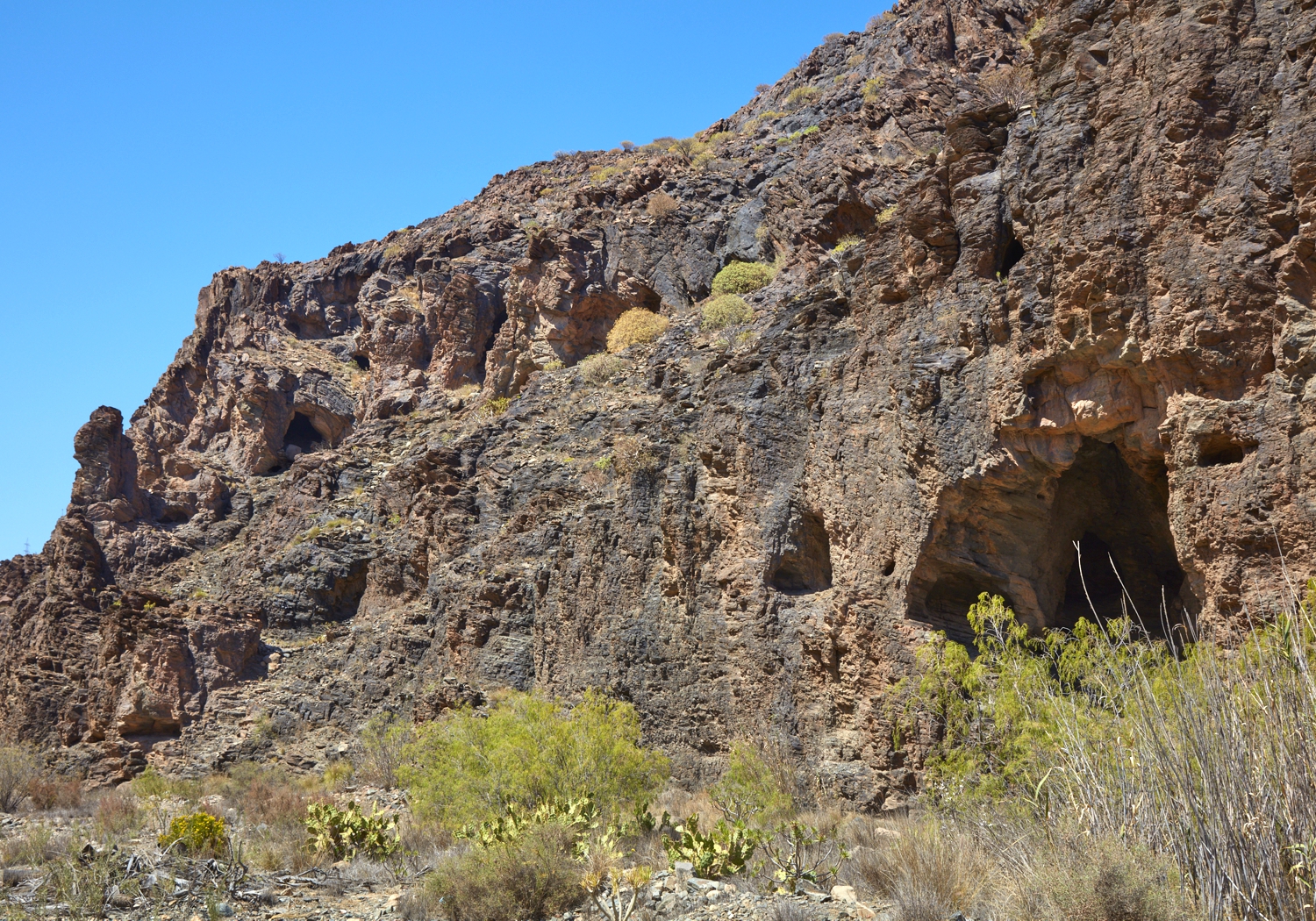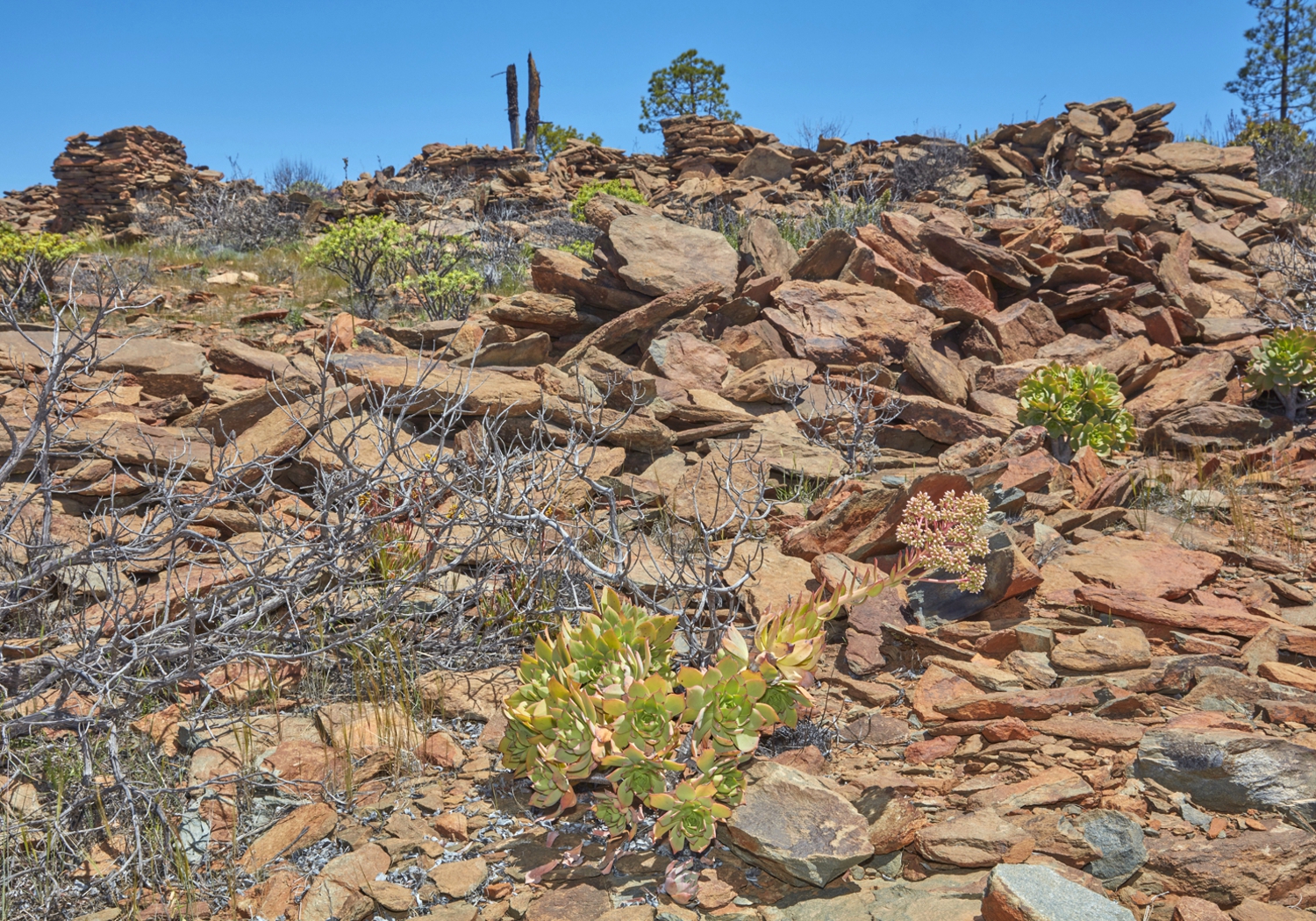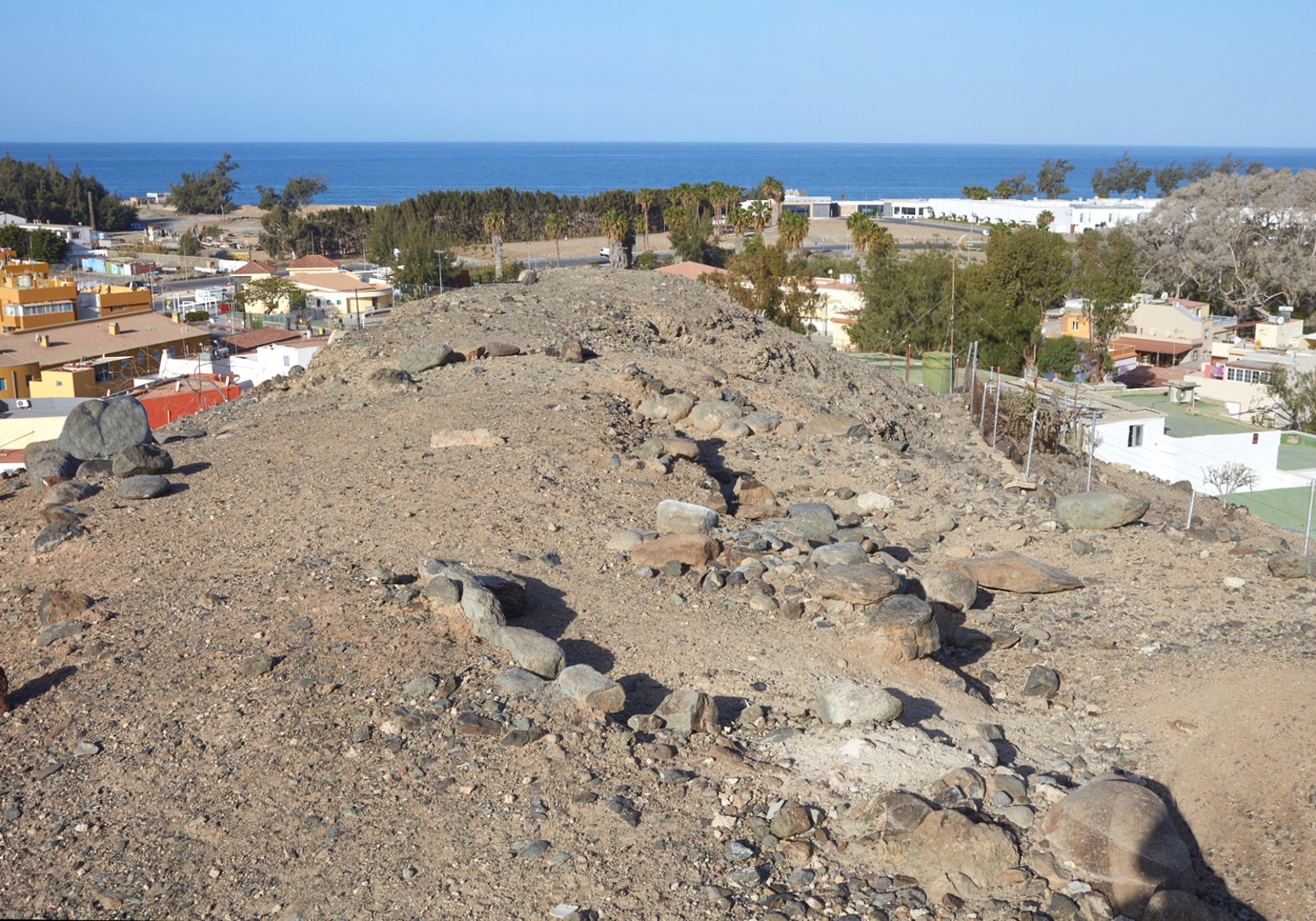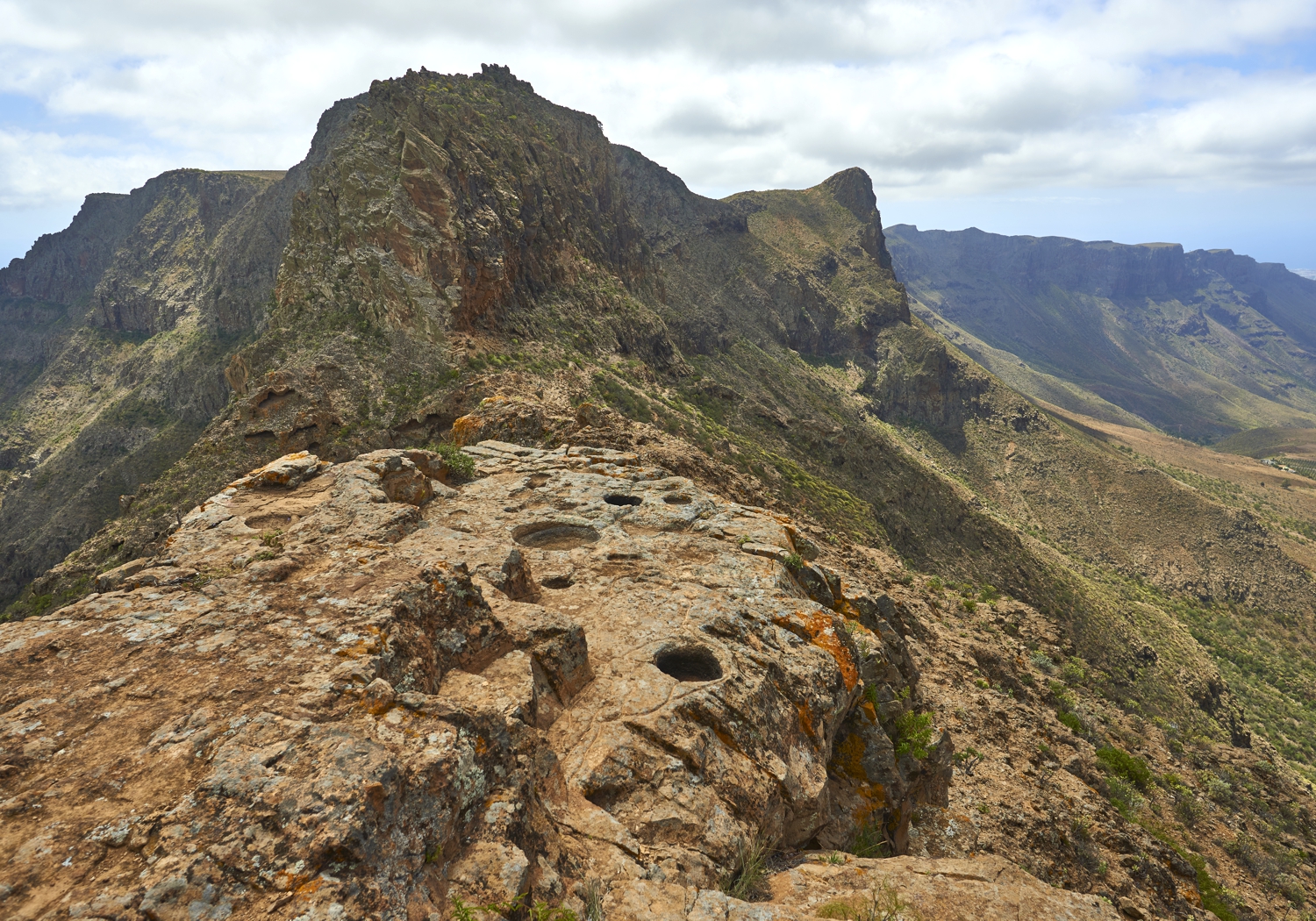Almogarén de Santidad
At the top of a plain facing south from the Santidad Mountain, a strange structure is located. Its functionality is uncertain, but it is considered a possible place of worship. It is a large elliptical-shaped enclosure (about 40×30 metres) made up of a double row of enormous slabs driven in, which has then been filled with other slabs placed horizontally to form a wall with an opening in the middle of each side. Inside it preserves the remains of three dwellings, in front of which stands a turret with a circular base. Access is via a dirt track that goes up to Morro de Hierbahuerto, on the left bank of the Chira ravine, beyond the wall of the dam heading south.
Caves of Los Vicentes ravine
Set of natural caves located on both sides of Los Vicentes ravine, near its confluence with the Fataga ravine. Its character is residential and funerary, appearing in some of them remains of closing walls, on slabs. One of them is given the name of Cave of the Idol, due to the appearance of a small clay idol, which represents an anthropomorphic female figure.
Las Pilas de Los Canarios
In a ledge located at the top of the Campanario, one of the highest mountains on the island, we find a platform that houses a curious group of five bowls and canals, identified at the end of the last century by Víctor Grau-Bassas as the lost almogarén ( place of worship) of Humiaga, cited by ethnohistorical sources, although today it is doubted whether it is Humiaga or whether it is an almogarén. Las Pilas de los Canarios is located right on the edge of the Caldera de Tirajana, facing an impressive abyss of hundreds of metres in free fall, with several bowls excavated from this cavity with great finesse in the rock, some of which are connected to each other by a complex network of fine canals that hold the water that usually drains from the rock almost all year round.
The texts on this page are based on the Guide to the Archaeological Heritage of Gran Canaria, edited by the Cabildo de Gran Canaria.
The text of Los Vicentes is extracted from the Archaeological Guide of San Bartolomé de Tirajana, published by the City Council.
